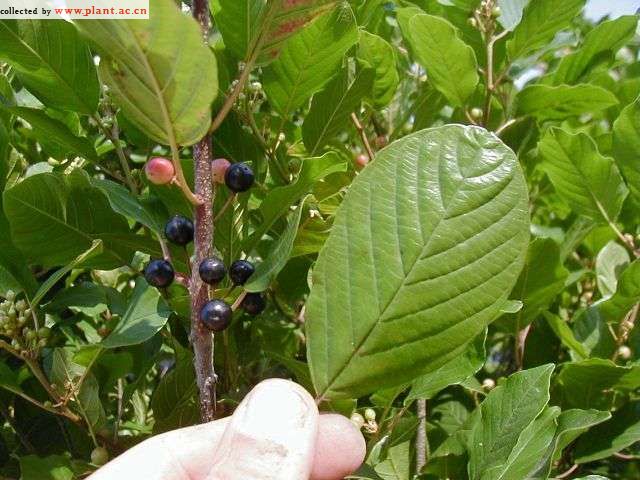Rhamnus frangula ColumnarisTall hedge buckthorn
科:鼠李科
Family:Rhamnaceae
属:鼠李属
common name:Tall hedge buckthorn
introduce:Plant Type: Deciduous shrub
Family: Rhamnaceae
Missouri Native: No
Native Range: None
Height: 12 to 15 feet
Spread: 3 to 4 feet
Bloom Time: May - June
Bloom Color: Whitish green
Sun: Full sun to part shade
Water: Medium moisture
Maintenance: Low
General Culture:
Easily grown in average, medium moisture, well-drained soils in full sun to part shade. Prefers consistent moisture. Adapts to a variety of soils. Plants will self-seed, but new seedlings are not always true. Self-seeding can be somewhat invasive in optimum conditions. Best propagated from cuttings. Plant 24-30?apart for a hedge that may be pruned to desired height.
Noteworthy Characteristics:
Rhamnus frangula is commonly called alder buckthorn because it is frequently seen in the wild growing in moist soils near alders (Alnus). It is also commonly called glossy buckthorn in reference to its glossy leaves. 慍olumnaris? also known as tallhedge buckthorn, is a fastigiate, once patented cultivar that was originally grown by the patent holder from seed. It has been popular in commerce since the 1950s. It is a deciduous shrub that typically grows in a narrow fastigiate shape to 12-15?tall but to only 4?wide with its stems and branches erect, laterally compact, close together and sometimes twining. Glossy, oval to obovate, dark green leaves (to 3?long) retain green color well into fall, usually resulting in poor fall color. Insignificant whitish-green flowers appear in axillary clusters in May-June. Flowers are attractive to bees. Flowers are followed by inedible berries that ripen in July. Berries change from green to red to dark purple as they mature. Birds are attracted to the berries and help spread them over the landscape and into neighboring areas U.S. Plant Patent PP1,388 was issued April 26, 1955.
Problems:
Japanese beetles, caterpillars and scale may appear. Nematodes can attack the roots. Watch for cankers, leaf spots and rust. Plants will lose lower branching as they age, sometimes resulting in a hedge/screen with legs. Concerns over self-seeding in the landscape and naturalization into rural areas should be addressed prior to planting.
Uses:
Excellent hedge (may be pruned back every 1-2 years to maintain 3-4?tall form). Also excellent privacy screen or narrow accent shrub. Foundations.
